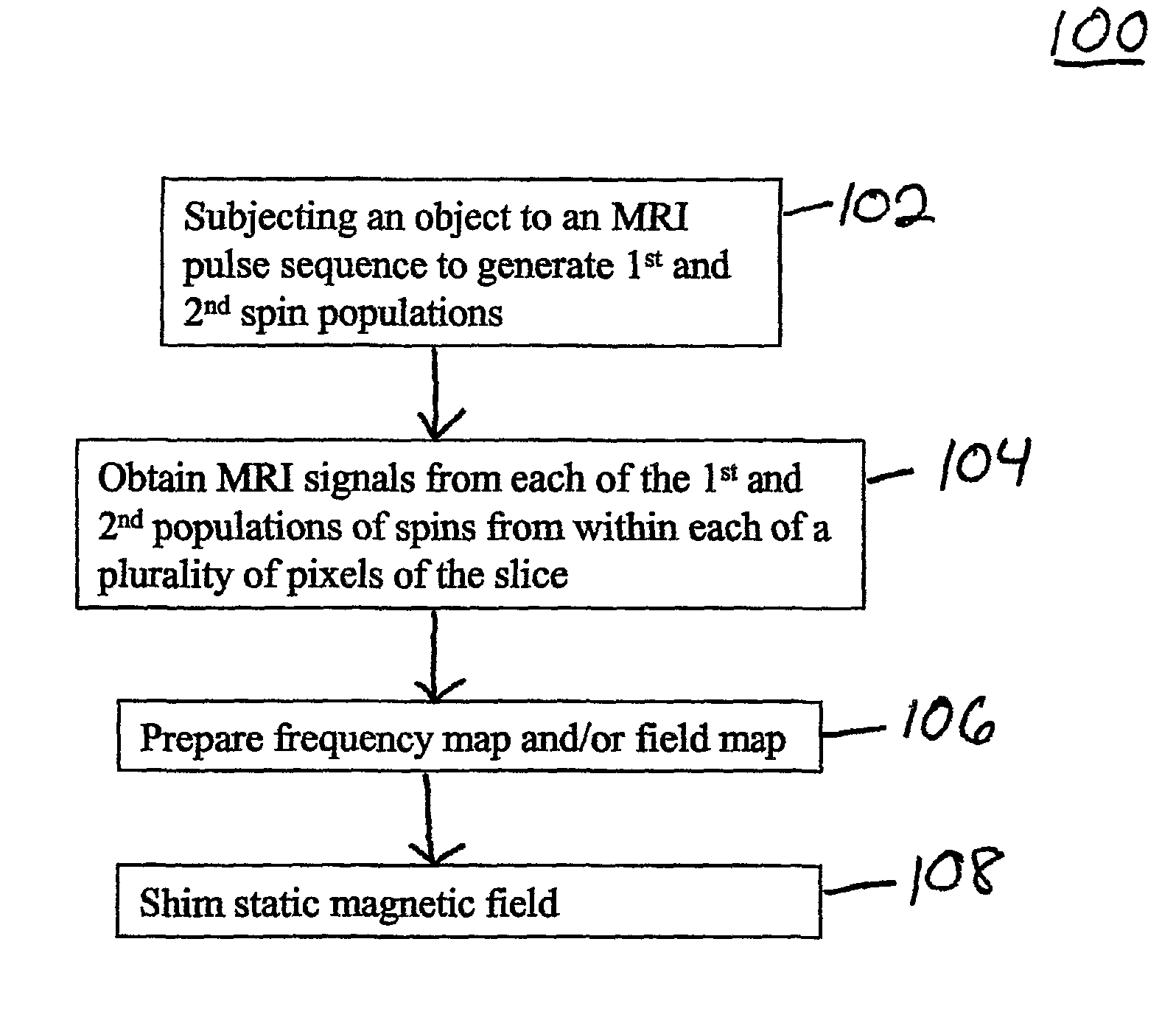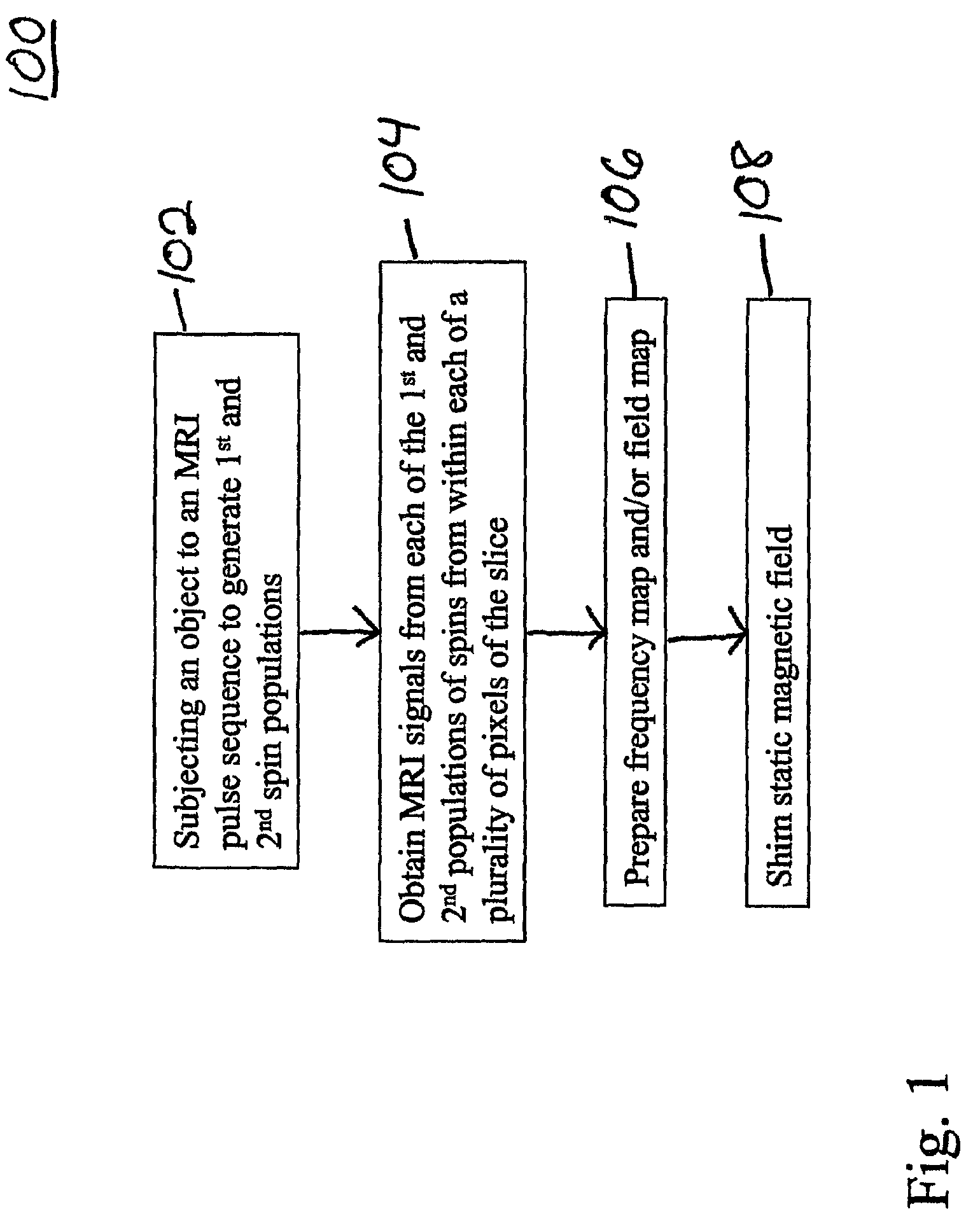Methods for obtaining MRI frequency maps
a frequency map and frequency technology, applied in the field of methods for obtaining mri frequency maps, can solve the problems of difficult shiming of certain objects,
- Summary
- Abstract
- Description
- Claims
- Application Information
AI Technical Summary
Benefits of technology
Problems solved by technology
Method used
Image
Examples
example 1
Obtaining MRI Signals
[0065]A General Electric 1.5T Signa MR scanner (LX, 8.2.5) with a custom 12×20 cm flexible linear surface coil was used to generate pulse sequence and obtain the MRI signals from a living subject's heart. Pulse sequences were generated and MRI signals obtained during each of 8 different cardiac cycles.
[0066]Referring to FIG. 4, each pulse sequence was a gradient echo MRI pulse sequence 400. Each pulse sequence 400 included first and second RF excitation pulses 2021, 2022, a dephasing gradient 204 and a prephasing gradient 208. A rephasing pulse was not used. Each excitation pulse 2021, 2022 was a 45° pulse. Each pulse sequence 400 excited the same slice twice during a single shot.
[0067]Pulse sequence 400 also included a plurality of readout gradients 210i. During the ith readout gradient, a subset 212i of MRI signals was acquired. The ith subset of MRI signals included a respective MRI signal corresponding to each of the RF excitation pulses 2021, 2022. Each MRI...
example 2
Preparing Frequency Maps
[0072]Frequency maps prepared from the set 212′ of MRI signals are shown in FIGS. 5a-5h. The average of these frequency maps is shown in FIG. 6. The frequency maps are nearly identical even though the frequency maps were obtained during different breath holds and between different heartbeats so that the heart was not in exactly the same position for each acquisition.
[0073]The frequency maps of FIGS. 5a-5h were acquired in the presence of a velocity encoding gradient. However, the velocity encoding gradient is not required for obtaining the frequency maps. The velocity encode affects only the phase change in the axis of velocity encoding (i.e. the change in phase with distance). When the same pixel of each of two images is compared to determine the frequency, the velocity encode cancels out.
[0074]The frequency maps of FIGS. 5a-5h were used for cardiac shimming. Referring to FIG. 7, an MR image of the heart, shimmed using the frequency map data discussed above ...
PUM
 Login to View More
Login to View More Abstract
Description
Claims
Application Information
 Login to View More
Login to View More - R&D
- Intellectual Property
- Life Sciences
- Materials
- Tech Scout
- Unparalleled Data Quality
- Higher Quality Content
- 60% Fewer Hallucinations
Browse by: Latest US Patents, China's latest patents, Technical Efficacy Thesaurus, Application Domain, Technology Topic, Popular Technical Reports.
© 2025 PatSnap. All rights reserved.Legal|Privacy policy|Modern Slavery Act Transparency Statement|Sitemap|About US| Contact US: help@patsnap.com



